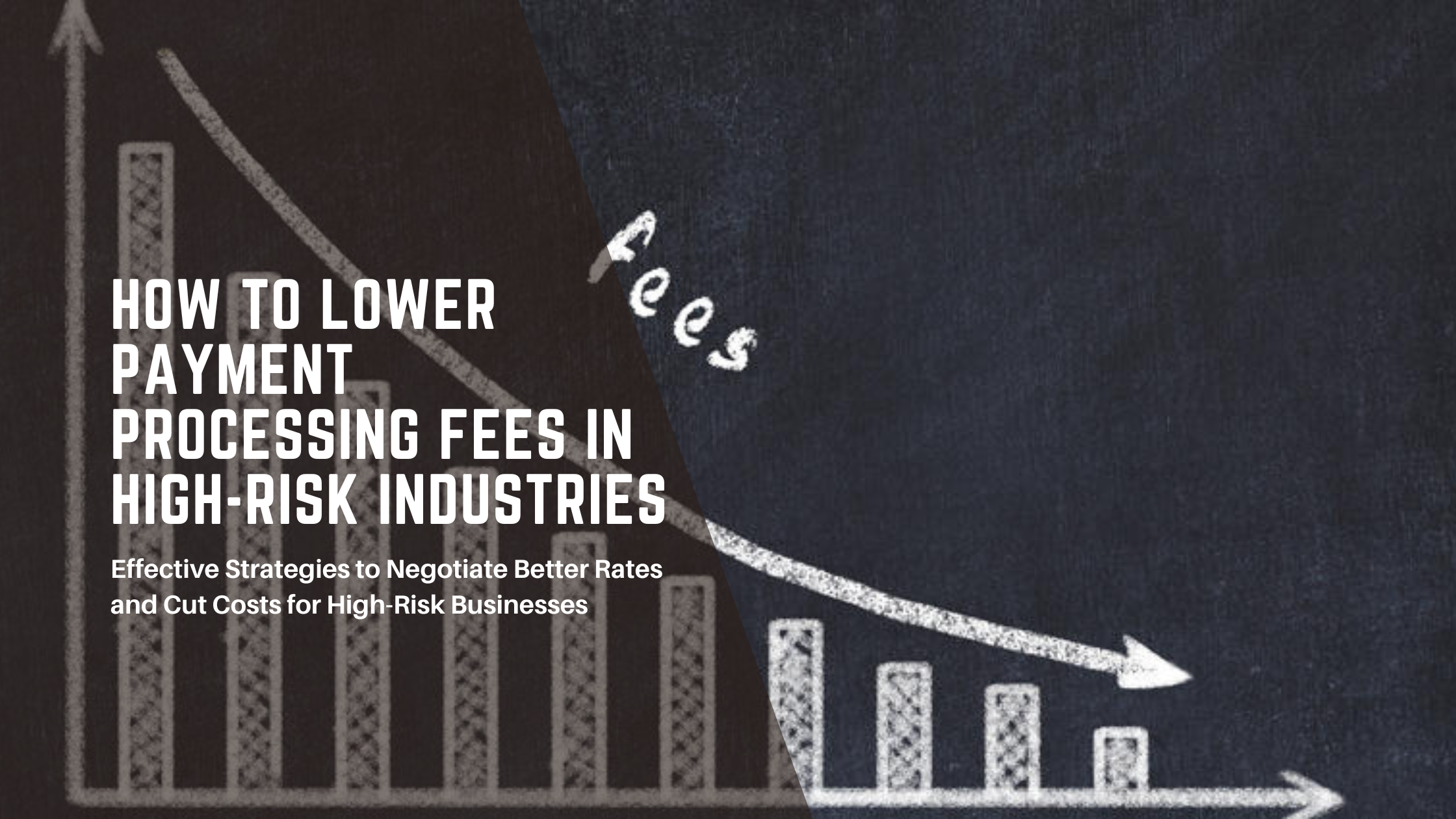
How to Lower Payment Processing Fees in High-Risk Industries
Effective Strategies to Negotiate Better Rates and Cut Costs for High-Risk Businesses
Operating in a high-risk industry—whether it’s gambling, adult entertainment, or forex trading—often comes with higher payment processing fees. While these fees are often unavoidable due to the nature of the business, there are practical strategies you can use to reduce your costs. Here are some effective ways to lower your payment processing fees and optimize your transactions.
Negotiate with Your Payment Processor
Not all fees are set in stone. It’s always worth negotiating with your payment processor, especially if you have a track record of consistent transactions and low chargeback rates. Some key areas to negotiate include:
- Transaction fees: Request a tiered or volume-based pricing structure.
- Chargeback fees: Some processors may offer reduced fees for businesses that maintain a low chargeback ratio.
- Monthly or annual fees: These are sometimes flexible, especially for long-term customers.
Optimise Your Payment Methods
Offering alternative payment methods such as direct bank transfers, cryptocurrencies, or e-wallets can significantly reduce your reliance on credit card transactions, which often carry the highest fees. Look into:
- Open banking solutions: These allow direct payments from a customer’s bank account, often at a lower cost than card transactions.
- Cryptocurrency payments: These can bypass traditional financial networks, reducing processing costs.
Maintain a Low Chargeback Ratio
Chargebacks are costly, both in fees and in damage to your relationship with payment processors. To reduce chargebacks:
- Ensure clear billing descriptors: Make sure your business name is easily recognizable on customer bank statements.
- Offer proactive customer service: A prompt response to customer complaints can prevent disputes from escalating to chargebacks.
Consider High-Risk Specialist Processors
While general payment processors may charge more for high-risk industries, there are specialist processors that cater specifically to high-risk businesses. These providers understand the unique challenges you face and may offer more competitive pricing, tailored services, and industry-specific fraud protection.
Choose the Right Pricing Model
Payment processors typically offer two main pricing models: flat-rate pricing and interchange-plus pricing. For high-risk businesses, interchange-plus pricing is often more transparent and cost-effective. It separates the processor’s markup from the actual interchange fees charged by card networks, giving you more control over managing costs.
Reduce Cross-Border Fees
If your business handles international transactions, cross-border fees can quickly add up. Consider working with a payment processor that has global partnerships, which can lower these fees or use multi-currency accounts to minimize conversion costs.
Monitor Your Transaction Volume
Payment processors often offer lower rates to businesses that process higher volumes. Regularly review your monthly transaction volume and discuss potential discounts with your processor if you’ve experienced growth. Processors are often willing to lower fees for higher transaction volumes or long-term relationships.
Take Advantage of Technology
Many payment processors offer integrated tools that can help you better manage your transactions and reduce costs. For example:
- Fraud detection tools: Prevent fraudulent transactions and lower chargeback rates.
- Payment gateways: Streamline payment processes and reduce operational costs.
Final Thoughts
Reducing payment processing fees is critical to managing expenses for high-risk businesses. By negotiating with processors, exploring alternative payment methods, and leveraging the right technology, you can reduce costs and improve your bottom line. For expert advice on optimizing your payment processing in high-risk industries, contact us at Merchant Connect for personalised solutions.
